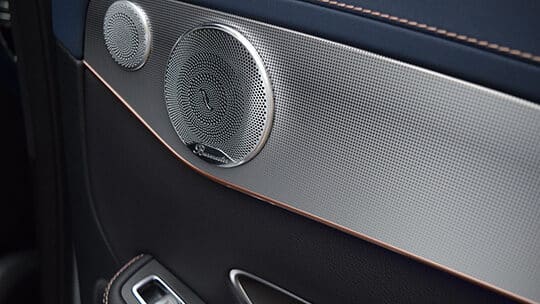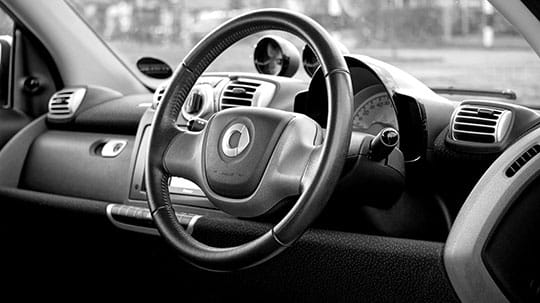Article Note: This article “How to Adjust Your Car Amplifier for the Best Sound Quality?” was first published on October 10, 2020. We last updated this article with fresh information on January 4, 2023.
Your car’s audio system is ready to go and you’re now just a few steps away from experiencing the ultimate hi-fi sound. With some simple tuning, your speakers will have newfound clarity and power; perfect for letting loose with your favorite tunes! Get started on creating an incredible music experience by adjusting channels, and boosting frequencies – let that bass boom!
Are you looking for the best sound possible from your car amplifier? Check out these expert tips to get stellar results! These suggestions are sure to help make every drive a sonic adventure.
Ways to tune your car amplifier

You can easily customize your sound experience with car audio tuning to match the vibe.
- Get up close and personal with basic adjustments made by ear;
- Or upgrade for a more precise technique using special tuning tools – perfect if you’re looking for that extra pop in clarity!
It takes some expertise, so make sure research is done before diving into any technical know-how.
Common amplification terms

Recommended for you: Top 10 Excellent Gadgets that can Improve Safety and Security in your Life.
Gain
A Gain component setting adjusts amplifier sensitivity. Determining the limits where distortion comes in. It tells you how much power your speakers can handle. Lowering this setting from the maximum level that meets distortion, in effect reduces, distracting noise, bringing you the maximum level of power with sound clarity.
Frequency
This is your speaker’s musical “pitch”. Luckily you can easily adjust this setting just by using the frequency label on your speaker’s casing. You can also find other frequency settings on the labels at the back of each speaker. It’s essential to use the specified frequency numbers to adjust your amplifier correctly.
High-pass filters (HPF) & Low-pass filters (LPF)
Make sonic magic with High-pass and Low-pass filters! These frequency settings allow you to control which frequencies reach your output jacks, enabling customized soundscapes tailored just for you.
Want to get the best sound possible from your tweeters and small speakers? Make sure you activate HPF; this will ensure that each output channel is powered in a way specifically optimized for these little beauties!
For medium-build speakers, you can unlock the full potential of sound with ‘full’ filter settings. These open up a spectrum of frequencies – from deep lows to mid-ranges and soaring highs!
Steps to tuning your car amplifier

Got your car amp that needs some TLC? Easy-peasy. Let’s check out the simplest way to bring it back up to peak performance: tuning your system by ear! Get ready for those sweet, sweet sounds of success.
- To get the best sound possible, start with a clean slate – turn off all filters and set your Gain to zero. That way you can adjust from there for optimal sonic results!
- Slowly increase the volume until you detect a slight but disruptive hum. Then, gently turn down the volume to eliminate it. Theoretically, bring it back up to 75% for an optimal listening experience!
- Dial in the distortion of your sound by gradually adjusting your Gain control until it reaches that sweet spot between clarity and crunch. Then fine-tune with subtle adjustments for a pristine yet powerful tone!
- Take your High Pass Filter to the next level! Increase it until you reach the perfect amount of distortion, then bring it back down. Experiment and find what works best for your sound.
How to tune for a great bass sound?

Looking to add some thump to your tunes? Here’s a quick tip for achieving that deep, rich bass sound you’re after:
1. Take out the distortion
To optimize your car stereo sound and prevent any distortion, try adjusting the Gain setting as well as turning up the Amplifier volume – but be sure to remember not to go too far! Dial it back a bit until you hear crisp, clean audio.
2. Flatten your signal, turn on the Low Pass Filter
- To get the best sound quality out of your sub amp, start by keeping Gain low and setting the Low Pass Filter high.
- Then adjust Bass Boost to a moderate level or off completely – this will help you cut down on unwanted bass frequencies in any track.
- For an even finer-tuned listening experience, set the Receiver’s Bass Tone to ‘flat’ (or zero) and provide extra focus with no more than minimal filtering by turning off the Low Pass filter – another great way to refine those lower notes!
It’s always best to pick one! When you try layering different combinations of crossover, low-pass filters, and bass boosts at the same time on your amplifier and head unit, it can lead to a distorted sound. Stick with just one for optimal audio quality.
You may like: 8 Technologies That are Shaking Up the Transport Industry.
3. Tweak your Low Pass Filter and Subwoofer Gain
- Play your car stereo music at ¼ of the volume level, turn up the subwoofer gain settings to distortion level, and dial it down slowly until the sound is clean.
- Turn up the sub amp Low-pass filter down slowly until you don’t hear all the mid and high-frequency notes.
Let your subwoofer show its strength! With a Low-Pass Filter, you can boost the bass and emphasize those low drums without overshadowing other important high-pitch sounds like strings, vocals, and guitars. Let it funk out in spectacular style!
4. Setting the Subsonic Filter and Bass Boots
- Slowly turn the bass boost until a distortion appears then dial it back to a clear sound. Doing this will enable you to hear the bass drum.
- Finetune subwoofers and all filters to make the bass sound tight or loose, depending on your preference.
5. Match your car stereo volume to your subwoofer level
- Turn up your car stereo volume level, then increase your subwoofer Gain until you hear the bass sound blending in nicely with the music.
Things to remember when tuning your car amplifier

When looking to get the best sound from your car stereo, setting Gain correctly is key! An improper level can result in a distorted and noisy audio experience. Setting it just right will ensure your speakers are all tuned for crystal clear clarity with every song you listen to.
When you adjust your amplifier, you need to consider these:
- The type of amplifier.
- The type of speakers.
- And the type of stereo.
Tuning your car audio system can be daunting and time-consuming, but don’t worry; there are many methods to get a great sound without technical tools. However, if you’d like an easier way to adjust the Gain components of each amplifier separately then phone apps with microphones connected could save you some hassle! Keep in mind that different combinations of head units (your main control panel) and amplifiers require varying levels for optimal sound – more isn’t always better when it comes to gain settings as louder doesn’t equal clearer or higher quality output!
What is sound clipping? How it affects audio gear performance?

For a systemized approach to car audio tuning, an oscilloscope can be used. This tool allows you to observe voltage test signals for different sound levels. The result is usually a smooth waveform when the output produces even top and bottom waves of sound without clipping or distortion – ensuring your subwoofers don’t blow! With precise calibration tools available, it’s easy yet critical to identify any signal clipping during setup so that optimal performance in all its glory can be achieved with every drive!
Here are what experts recommend to avoid clipped audio signals:
1. When selecting an amplifier, choose one with a capacity to give your subwoofers the maximum clean watt possible.
Look for an amplifier that has 80 – 150% subwoofer-rated RMS power.
2. Always make sure to set your gain correctly.
Correctly setting your gain is a must to avoid clipping. More gain does not equal more volume. A gain is designed to match the input on an amplifier with the output of the head unit.
3. Avoid fumbling with a bass boost early.
Even though you paid for everything, including the bass, not properly adjusting the gain, while using the bass boost can unnecessarily stress out your amplifiers.
The bass boost is also a gain setting that specifically finetunes the small band of bass frequencies.
Playing it by ear is a valid way to tune a car amp, but you can ask for help and learn how to tune with an oscilloscope and test tones, for a more standard way to adjust a car amp every time.

Setting amplifier gain with standard test tones
In the tuning options mentioned above, you either watch out for distortions or square-shaped waves on an oscillator. If you’re setting your amplifier gain by using test tones, you watch out for a buzzing sound.
A test tone refers to a single note that plays at a specific frequency. You can download tones online, and save them on a disk, on a chip, on your phone, or as a file. They come in 100, 400, 800, and 100 Hz.
You may also like: Top 10 Best Selling Dash Cameras for the Safety of Your Car.
Here are the steps for setting car amplifier gain with test tones:
- Have your EQ receiver presets and the amp’s bass boost at normal settings when you listen to music.
- While your gain is at a minimum, play the 40 Hz test tone. Increase your receiver’s volume until you hear a buzz. Back off a little until a humming sound returns. Note down the volume setting.
- Repeat step number 2, and use the different test tone levels.
- Choose the test tone with the minimum and clean volume settings and play it again using the same settings.
- Increase your amp’s gain and watch out for a buzz, dial it back down until it hums. And you’re finished.
Also note that you should use music that’s not: rap, techno, or heavy metal so you can hear any distortion clearly. Also use music from different sources, either a CD, your iPod, etc.





